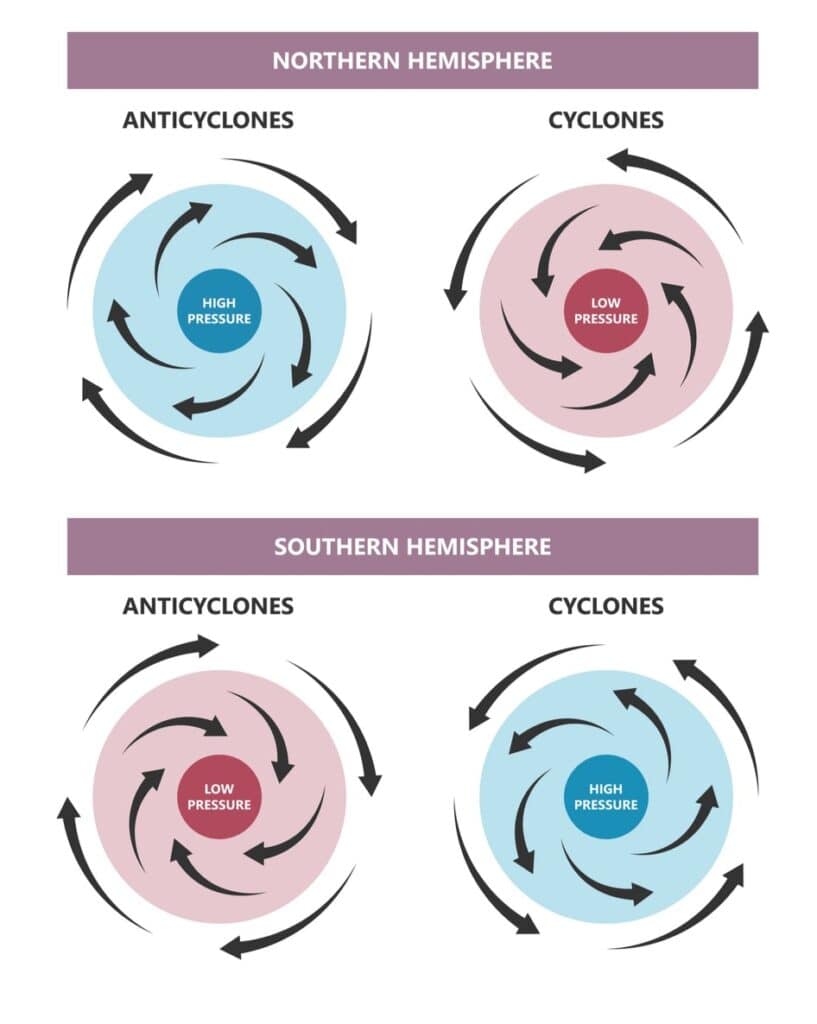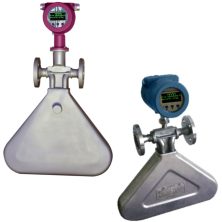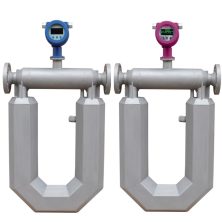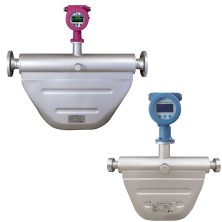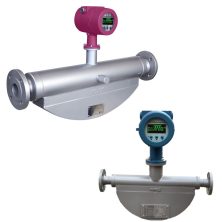Featured Products
- Best for low flows
- Liquids
- Sizes ⅛"-1" (3-25mm)
- -58-356°F (-50-180°C)
- ± 0.1, 0.15, 0.2 and 0.5% of reading
- Flanged (ANSI, DIN, JIS, Sanitary) Threaded (NPT, BSP)
- Low flows, small pipe sizes
- Chemical, Pharmaceutical, Automotive, Food & Beverage
Specifications
Specifications
- Most popular - Low pressure drops
- Liquids and Gas
- Sizes ¼"- 12" (8-300mm)
- -40-662°F (-30-350°C)
- ± 0.1, 0.15, 0.2 and 0.5% of reading
-
Flanged (ANSI, DIN, JIS, Sanitary)
- Low pressure drop, water-cut measurement
-
Oil & Gas, Petrochem, Automotive, Industrial Process Control
Specifications
- Lowest pressure – limited sizes
- Liquids
- Sizes 2"-3" (50-80mm)
- -58~+392 °F ( -50~+200˚C)
- ± 0.1, 0.15, 0.2 and 0.5% of reading
-
Flanged (ANSI, DIN, JIS, Sanitary)
- Lowest pressure drops, only 2" and 3" available
-
Special applications where low pressure drop is critical
Specifications
Coriolis Meters Overview
Coriolis flow meters provide reliable and accurate measurement for a wide range of fluids and gases. This remarkable technology directly measures mass flow rate by harnessing the Coriolis effect – an inertia force caused by the Earth’s rotation.
As media passes through the flow meter’s vibrating tubes, Coriolis forces cause them to twist and deform, with sensors detecting the resulting movements. Sophisticated electronics instantly translate these readings into accurate mass flow rate, density, and temperature data. WIth it’s unique ability to directly measure these three critical parameters, the Coriolis meter also gains the ability to provide inferred measurements, such as volumetric flow rate, % water cut, and degrees Brix, among others.
The genius behind Coriolis flow meters lies in their ability to provide direct mass measurement. As true mass flow devices, they quantify the actual amount of fluid or gas traversing the system, irrespective of pressure, temperature or viscosity changes. This makes their readings incredibly reliable across diverse operating conditions.
In this guide, we’ll be exploring what makes Coriolis flow meters an indispensable flow measurement tool. We’ll cover their underlying scientific principles, diverse applications across industries, available designs, installation best practices, and more.
By understanding the technology within these meters, engineers can leverage their capabilities for precision flow control and analysis – whether measuring chemicals, hydrocarbons, food products or pharmaceuticals. Let’s begin unraveling the science empowering these critical instruments.
Choosing the Right Coriolis Meter
Selecting the ideal Coriolis flow meter for your application is a critical decision that hinges on several key factors. Understanding these criteria ensures that the meter you choose not only fits your immediate needs but also adapts to your process environment, offering long-term reliability and accuracy.
Coriolis Flow Meter Selection Criteria
When it comes to choosing the right Coriolis meter, several variables play a pivotal role:
- Size and Flow Rate: The size of the meter should match the pipeline it will be installed in, ensuring minimal disruption to the flow. Equally important is the meter’s capacity to accurately measure the expected flow rates within your system, whether dealing with high-volume throughput or precise, low-flow applications.
- Material Compatibility: It’s essential that the meter’s materials of construction are chemically compatible with the fluids they will come into contact with. If the materials of the meter are incompatible with the fluid that is to be measured, corrosion or deterioration might happen, which could affect the meter’s performance, accuracy, and longevity.
- Temperature and Pressure Ranges: The meter’s ability to function within specific temperature and pressure ranges is critical, particularly for processes under severe conditions. Choose a meter designed to endure the particular temperature and pressure requirements of your application to guarantee steady performance.
- Industry-Specific Requirements: Certain industries may have additional requirements, such as sanitary design for food and beverage applications or explosion-proof certifications for hazardous areas in oil and gas production. Choose a meter that has the necessary design elements and approvals for your specific industry/application.
Coriolis Meter Applications
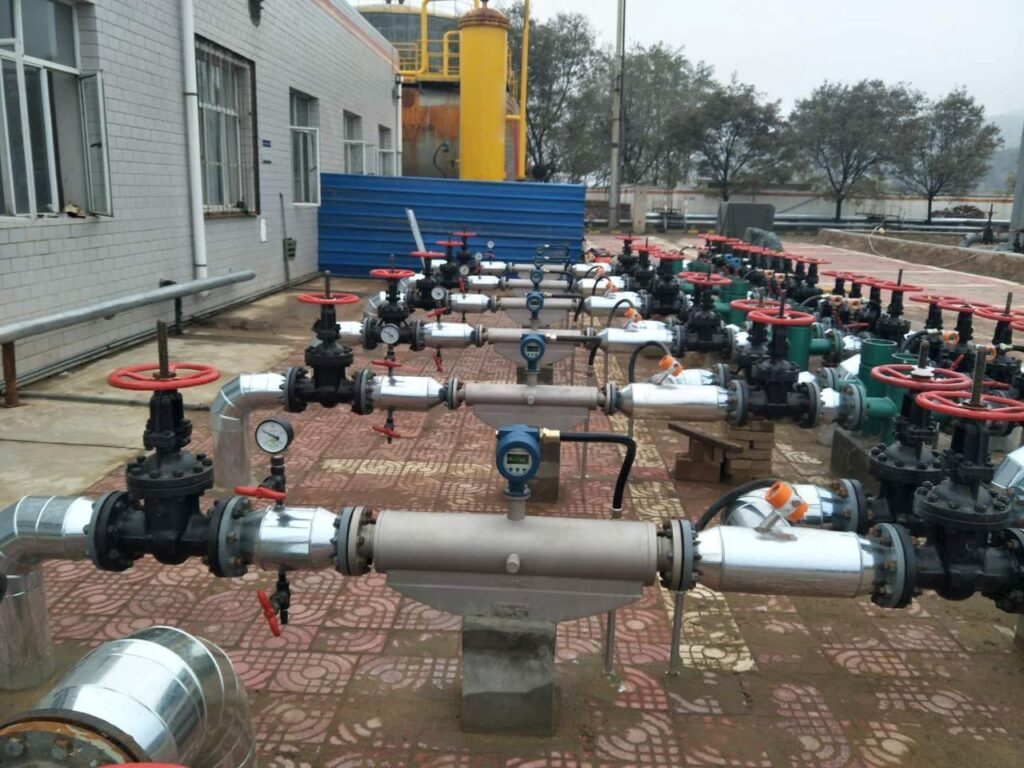
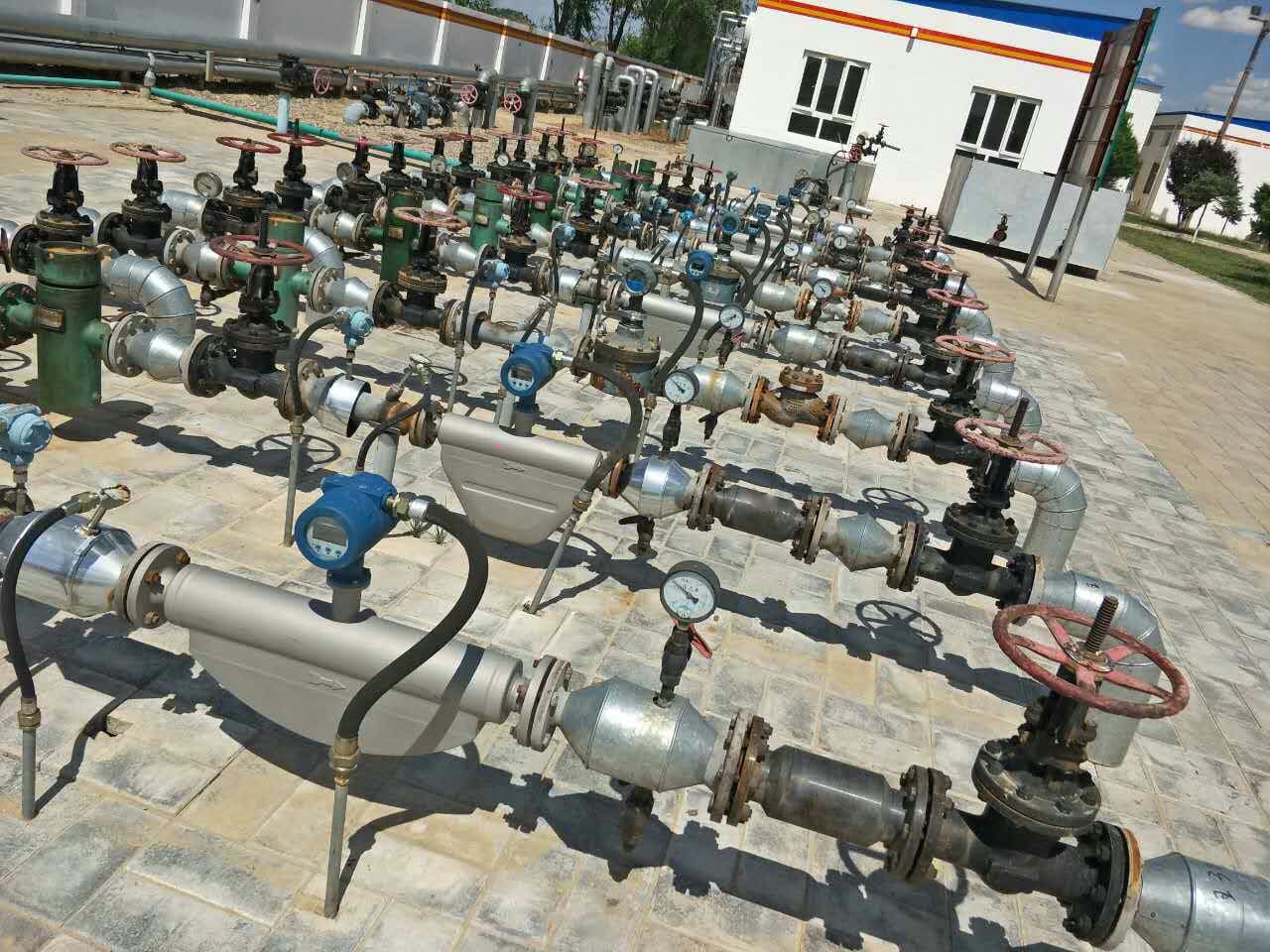
Coriolis flow meters have been pivotal in revolutionizing the accuracy and reliability of flow measurement across a myriad of industries. These meters are renowned for their unparalleled precision in measuring mass flow, density, and temperature of fluids, making them indispensable in sectors where accuracy is critical.
Coriolis Type Flow Meter for Specific Industries
In the intricate world of industrial measurements, Coriolis flow meters set the standard for accuracy, revolutionizing how we approach flow measurement across all industries. Their introduction marked a significant leap forward, particularly in fields where the margin for error is virtually nonexistent. From the oil-drenched rigs dotting our landscapes to the pristine environments of pharmaceutical manufacturing, the adoption of Coriolis technology has been nothing short of transformative.
The Oil and Gas Sector’s Embrace of Coriolis Technology
The oil and gas industry, a complex web of exploration, production, and processing activities, demands nothing less than the utmost accuracy in measurement—a demand Coriolis flow meters meet with ease.
- In the Field of Exploration: The search for oil and gas is a high-stakes endeavor where the precise handling of drilling fluids and chemicals can dictate the success of an operation. Here, Coriolis meters shine, optimizing the deployment of costly resources and safeguarding our environment by ensuring that only the necessary amounts are used.
- Through the Production Pipeline: As resources are extracted, the ability to measure outputs accurately becomes a cornerstone of effective management. Coriolis meters, with their direct mass measurement capabilities, ensure that every unit of production is accurately accounted for, aiding in reservoir management and satisfying regulatory oversight.
- At the Refining Stage: Transforming crude into usable products is an exercise in precision, where Coriolis meters’ resilience to extreme operational conditions ensures that the refining process is both efficient and yields products that meet our high standards.
Beyond Petroleum: Nourishing Innovation in Food, Beverage, and Pharmaceuticals
Coriolis meters’ utility extends into sectors where the integrity of the product is paramount, and precision in ingredient measurement is non-negotiable.
- In the Food and Beverage Arena: Consistency is the linchpin of consumer trust. Coriolis meters ensure that each ingredient, whether liquid, gas, or solid, is added with precision, guaranteeing the uniform quality and taste of food and beverage products. The meticulous control over carbonation levels in beverages is a testament to their precision.
- Within Pharmaceutical Laboratories: The stakes in pharmaceutical manufacturing could not be higher, where the exact formulation of compounds is critical to creating effective and safe medications. Here, Coriolis meters are instrumental, allowing for the precise dosing of critical ingredients, thereby ensuring that each batch meets the rigorous standards set forth by the industry.
Real-World Impact: Case Studies
The efficacy of Coriolis meters is not merely theoretical but is evidenced by their application across industries:
- A notable pharmaceutical manufacturer integrated Coriolis meters into their production line, achieving real-time monitoring of ingredient flows. This move significantly enhanced the consistency of batches, minimized waste, and ensured adherence to quality standards.
- A brewery, seeking to refine its fermentation process, turned to Coriolis meters. The result was a marked improvement in the quality of their beer, alongside notable operational cost reductions.
Coriolis flow meters have solidified their role across various industries, signaling a breakthrough in the accuracy and efficiency of fluid measurements. Their exceptional precision and capability to assess various types of substances make them critical for optimizing operations. Whether in mining valuable resources, ensuring the integrity of food and beverages, or adhering to strict pharmaceutical manufacturing standards, these meters are fundamental. They play a crucial role in fostering industrial advancements and maintaining quality standards, establishing themselves as indispensable instruments within the industrial landscape.
Understanding Coriolis Flow Meters
As media passes through the flow meter’s vibrating tubes, Coriolis forces cause them to twist and deform, with sensors detecting the resulting movements. Sophisticated electronics instantly translate these readings into accurate mass flow rate, density, and temperature data. With its unique ability to directly measure these three critical parameters, the Coriolis meter also gains the ability to provide inferred measurements, such as volumetric flow rate, % water cut, and degrees Brix, among others.
The genius behind Coriolis flow meters lies in their ability to provide direct mass measurement. As true mass flow devices, they quantify the actual amount of fluid or gas traversing the system, irrespective of pressure, temperature or viscosity changes. This makes their readings incredibly reliable across diverse operating conditions.
In this guide, we’ll be exploring what makes Coriolis flow meters an indispensable flow measurement tool. We’ll cover their underlying scientific principles, diverse applications across industries, available designs, installation best practices, and more.
By understanding the technology within these meters, engineers can leverage their capabilities for precision flow control and analysis – whether measuring chemicals, hydrocarbons, food products or pharmaceuticals. Let’s begin unraveling the science empowering these critical instruments.
History of Coriolis Flow Meters
At the core of many critical industrial processes lies the fundamental need for precision fluid measurement and control. This is the vital task fulfilled by the ingenious Coriolis flow meter – an advanced instrument designed specifically to measure true mass flow rate of liquids and gasses flowing through vibrating tubes. Unlike traditional volumetric flow meters relying solely on fluid velocity, Coriolis meters focus directly on harnessing the inertia of the fluid itself to deliver exceptionally accurate and reliable mass flow data.
The conceptual foundations of Coriolis metering can be traced back to the pioneering work of French physicist Gaspard-Gustave de Coriolis in the early 19th century. He was first to describe the subtle twisting forces generated when analyzing motion in a rotating frame of reference – aptly termed the Coriolis effect. Yet it took modern technological advancements before this phenomenon was effectively harnessed, with the first Coriolis mass flow meters emerging in the late 1970s. Their debut revolutionized the industry by enabling a level of precision flow measurement previously unattainable.
Coriolis Meters – How Do They Work?
The ingenious operating principle behind Coriolis flow metering seems almost deceptively simple on the surface. As fluid travels through oscillating flow tubes, the vibration imparts an acceleration on the media particles. This creates a force that leads to the tubes subtly twisting in direct proportion to the mass flow rate. Highly sensitive sensors measure this minute tube deflection, capturing the Coriolis effect in action to derive an exceptionally accurate reading.
In many ways, the effect is similar to the twist observed when spinning a ball on a string – the vibrating tubes cause fluid particles to veer off their straight trajectory. Carefully placed sensors determine the resulting phase shift between the tubes’ inlet and outlet sides. These tiny differential changes are then used to precisely calculate the true fluid mass traversing the system. The meter instantly translates these readings into mass flow measurements, while remaining immune to fluid variables such as temperature, pressure or viscosity fluctuations.
What truly sets Coriolis technology apart is the incredible accuracy and reliability it brings to industries where highly accurate measurement is critical. Whether verifying custody transfer of high-value chemicals, controlling dosage in pharmaceutical manufacturing, or ensuring product quality in food and beverage production – Coriolis meters elevate process control and reduce costly errors. Their versatility also allows a single device to measure liquids, gasses and even slurries across a wide range of operating conditions.
Additionally, the rugged design of Coriolis meters makes them suitable for the stringent demands of petrochemical plants and oil fields alike – able to withstand vibration, temperature swings and exposure to corrosive media. Combined with minimal maintenance needs and long service life, it’s easy to see why Coriolis meters have become an indispensable solution for precise process fluid measurement.
Coriolis Mass Flow Meter
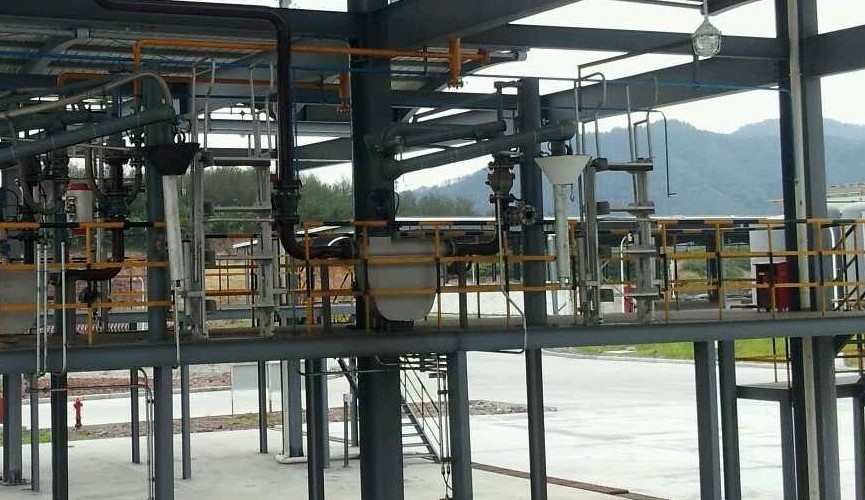
This designation underscores the device’s ability to directly measure mass rather than volumetric flow rates of flowing fluids over time. This ability is crucial for processes where the exact mass impacts the outcome, such as in the precise mixing required in food production or chemical synthesis.
Generally speaking, Coriolis flow meters broadly covers the meter’s capability to gauge flow rates. It implies the technology’s adaptability in measuring both mass and derived volumetric flow rates, catering to a wide array of industrial applications. The application context and measurement accuracy requirements typically guide the preference for one term over the other.
SmartMeasurement’s array of Coriolis flow meters is meticulously engineered to address the unique challenges across various sectors, ensuring precise and efficient flow management for every conceivable application, from the most delicate to the most robust.
Coriolis Mass Flow Meter Installation Guide
Step 1: Select the Proper Location
First, identify the most suitable location for your Coriolis meter. It should be easily accessible for maintenance and inspection. Avoid areas with extreme temperature fluctuations or excessive vibration, as these can affect the meter’s performance.
Step 2: Prepare the Site
Ensure the installation site is ready. This preparation might involve clearing the area of debris, ensuring structural support is in place, and confirming that there is enough space around the meter for future maintenance activities.
Step 3: Install Support Structures
Before mounting the Coriolis flow meter, install any necessary support structures. These supports prevent stress on the meter’s body and connections, which could lead to measurement errors, leakage, or damage.
Step 4: Position the Meter
Carefully position the meter in the designated location. Unlike other flow measurement technologies such as turbine or ultrasonic, the Coriolis meter does not require any minimum amount of straight rigid pipe upstream and downstream of the meter. When possible, installing a short straight run and the meter inlet and outlet is recommended, but not required.
Step 5: Connect the Meter
Connect the meter to the piping system. Ensure all connections are secure and leak-free. Following the manufacturer’s guidelines for the type of connections and seals to use is crucial.
Step 6: Power and Communication Connections
Make the necessary electrical and data connections according to the manufacturer’s instructions. Make certain to do so in accordance with all applicable local electrical codes.
Step 7: Calibration and Testing
Once installed, calibrate the meter if required. Then, conduct tests to verify that it is operating correctly and accurately measuring flow.
Overcoming Common Installation Challenges
Challenge: Vibrations and Pulsations
Vibrations from nearby equipment or pulsations from pumps can affect meter accuracy. Solution: Install the meter away from sources of vibration or use anti-vibration mounts. Dampeners can help mitigate the effects of pulsations.
Challenge: Environmental Conditions
Extreme temperatures or humidity can impact the meter’s electronics. Solution: Install protective enclosures or shelters to shield the meter from environmental extremes.
By carefully following these steps and addressing common challenges, you can ensure the successful installation of your Coriolis flow meter, maximizing its performance and reliability in your application.
Maintenance and Troubleshooting
Ensuring your Coriolis flow meter operates at peak efficiency involves regular maintenance and swift troubleshooting. Here’s how to keep your meter in top condition and address any issues that may arise.
Maintaining Your Coriolis Flow Meter
Routine Maintenance Tips:
- Regular Inspections: Schedule periodic visual inspections of the meter and its connections. Look for signs of wear, corrosion, leakage, and water ingress. External inspections can catch issues before they impact meter performance.
- Cleanliness: Keep the meter and surrounding area clean. Dirt, debris, or buildup inside the meter can affect its accuracy. For meters handling solids or viscous liquids, scheduled cleaning and use of filtration prevents clogs and ensures accurate measurements.
- Calibration Checks: Regularly verify the meter’s calibration, especially if it measures critical flows or operates in harsh conditions. Calibration ensures the meter continues to provide precise readings over time.
- Software Updates: If your meter uses software for operation or data analysis, keep it updated. Manufacturers may release updates to improve functionality or address known issues.
Identifying and Solving Common Issues:
- Drift in Measurement Accuracy: If you notice a gradual change in measurement accuracy, recalibration may be necessary. Environmental changes or buildup in the meter can cause drift.
- Erratic Readings: Sudden, unexplained fluctuations in readings can indicate air bubbles in the liquid, partial blockages, or electrical interference. Check for leaks that could introduce air, ensure the meter is properly grounded, and inspect the pipeline for obstructions.
- No Readings or Power Issues: If the meter stops working entirely, check the power supply and electrical connections first. A simple power issue can mimic more serious meter failures.
- Error Codes: Modern Coriolis meters often display error codes to help diagnose problems. Refer to the manufacturer’s manual for specific codes and recommended actions. Common issues include flow disturbances, temperature extremes, or internal faults.
By adhering to these maintenance tips and being vigilant about potential issues, you can extend the life of your Coriolis flow meter and ensure it continues to provide reliable, accurate measurements. Regular maintenance not only prevents downtime but also maintains the integrity of your processes, ensuring that your operations run smoothly and efficiently.
Coriolis Flow Meters Advantages
In the realm of industrial measurements, Coriolis flow meters emerge as essential instruments, renowned for their precise fluid flow measurements crucial for a multitude of industrial processes. These meters are particularly valued for their exactitude and their capability to adeptly measure an array of substances, establishing them as indispensable in the toolkit of modern industrial practices.
Unmatched Accuracy and Stability
Coriolis flow meters are synonymous with exceptional measurement accuracy. By directly quantifying the mass flow of fluids, these meters deliver stable and accurate data, impervious to external influences like variations in temperature or pressure.
Such precision is vital across various sectors, especially where the slightest inaccuracy can lead to significant repercussions. In the pharmaceutical industry, for instance, the accuracy of blending ingredients directly impacts the quality and safety of medical products. Similarly, in the oil and gas sector, the financial implications of fluid transactions hinge on the precise quantification of those fluids. The steadfast reliability and the minimal recalibration needs of Coriolis flow meters facilitate smoother operations and maintain consistent accuracy over prolonged periods.
Adaptability Across Diverse Media
A notable advantage of Coriolis flow meters lies in their flexibility to measure different types of media accurately. Beyond liquids, these meters proficiently quantify gasses and solids, a feature that proves invaluable in sectors dealing with a broad spectrum of materials. In the food and beverage industry, for example, a singular Coriolis meter can precisely track the flow of various components, from liquid ingredients and glasses used in packaging to solid food items.
This multifaceted measurement capability reduces the need for multiple measurement systems, streamlining operations, and leading to significant cost efficiencies. Additionally, the sturdy construction of Coriolis meters guarantees their effective performance even in demanding environments and with harsh materials, broadening their applicability across numerous industrial settings.
The introduction of Coriolis flow meters into industrial measurement practices brings forth a revolution in accuracy, reliability, and versatility. Their direct mass flow measurement approach, combined with the ability to handle a wide variety of materials, positions them as the go-to solution for enhancing process efficiency and ensuring precision in fluid measurement tasks across industries.
Future Trends and Innovations
The landscape of Coriolis flow meter technology is on the cusp of significant evolution, driven by advancements that promise to expand their capabilities and applications. As we look to the future, several emerging trends and innovations stand out, poised to redefine how these versatile instruments can be utilized across industries.
Progress in Coriolis Flow Meter Technology
A particularly thrilling advancement is the downsizing of Coriolis flow meters. The shift to smaller, more compact designs enables their application in environments where previously, space constraints would have precluded their use. Consider the implications for pharmaceutical laboratories or aerospace endeavors, where accuracy is paramount but room is scarce. These diminutive meters maintain the same superior accuracy and dependability as the larger versions, broadening the horizons for process management and measurement in confined areas.
Another area of innovation is in the integration of smart technologies with Coriolis meters. The emergence of IoT (Internet of Things) connectivity enables these meters to offer instantaneous data analytics, alerts for predictive maintenance, and flawless incorporation into wider process management systems. This integration of smart capabilities not only boosts operational efficiency but also minimizes downtime by foreseeing and mitigating problems before they cause system breakdowns.
Furthermore, advancements in materials science are expanding the range of fluids that Coriolis meters can accurately measure. New alloys and coatings are being developed to handle corrosive or abrasive fluids more effectively, broadening the scope of applications for these meters in industries such as mining, chemical processing, and wastewater management.
As we look ahead, the potential for Coriolis flow meter technology seems boundless. These innovations are not just enhancing the functionality and application of these meters but are also driving efficiency, safety, and sustainability in industrial processes worldwide. The future of flow measurement is bright, with Coriolis technology at the forefront of this transformative journey.
Properly installing Coriolis flow meters is essential for maintaining their accuracy and reliability. This guide offers a detailed, step-by-step methodology for setting up these devices and tackles typical obstacles that may arise during the process/
Theories of Operation



The rotation of the Coriolis effects is opposite in the Northern hemisphere versus Southern